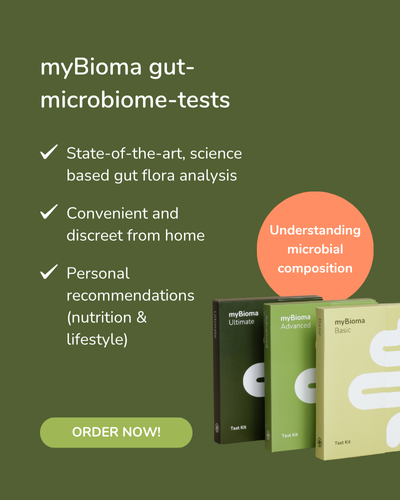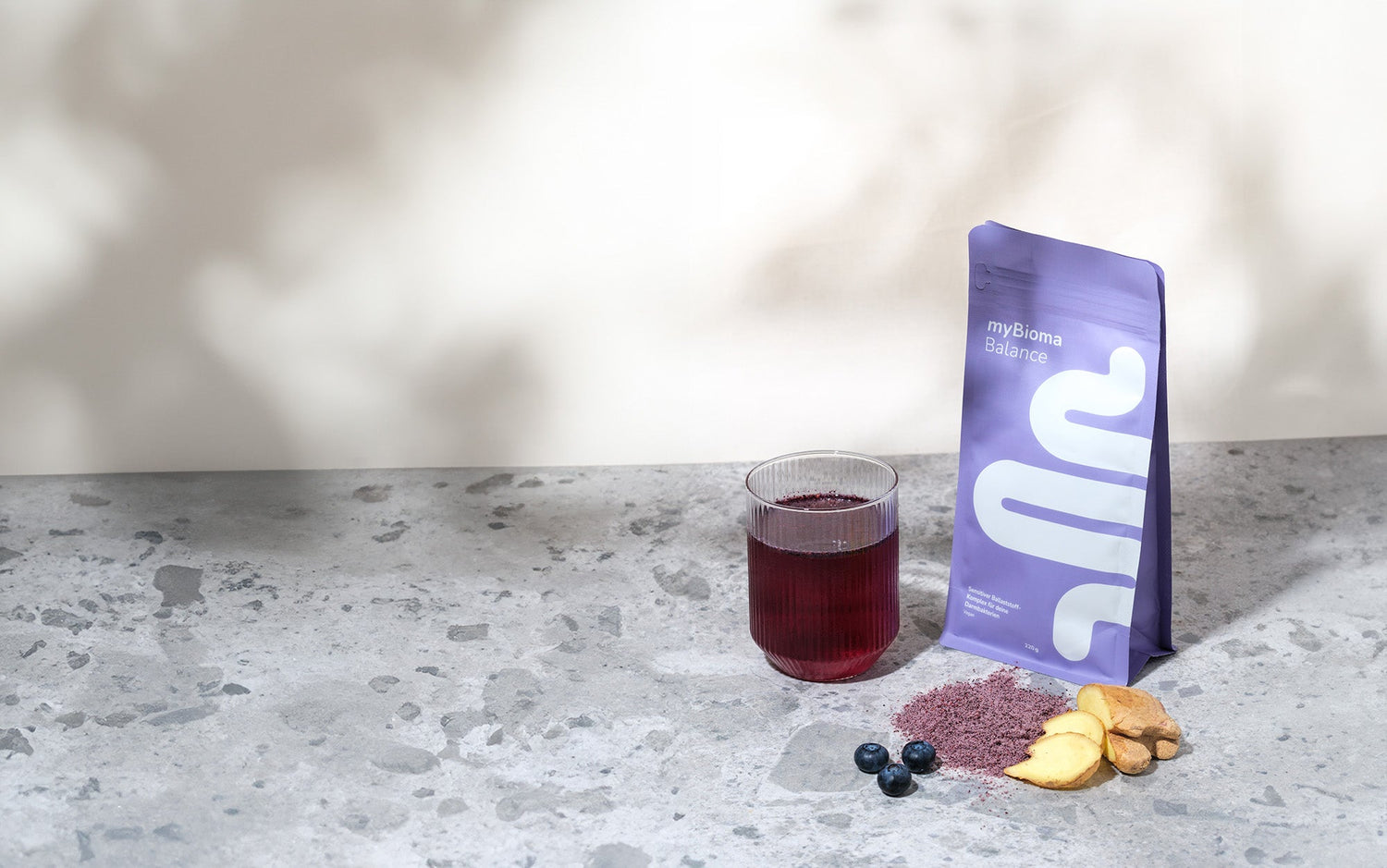Abdominal pain, bloating, constipation or diarrhea... far too many people have these complaints on a regular basis. Yes, up to 15% of people suffer from irritable bowel syndrome - an incredibly high percentage for a disease. (1) One hypothesis for the development of the disease revolves around the intestinal flora, also known as the "microbiome". This term has also been used more and more frequently in recent years for many other diseases. Obesity - the intestinal bacteria could be to blame. Diseases of the blood vessels, such as atherosclerosis, could be influenced by unhealthy intestinal flora. Chronic inflammatory bowel diseases such as Crohn's disease or ulcerative colitis - here too, the microbiome appears to be involved. Even autism could be influenced by the intestinal flora!
So the microbiome is always to blame? No, we should not blame the bacteria in our gut alone! But the latest research findings suggest that they are also involved. This naturally begs the question: What is a healthy microbiome and how do I recognize it? And above all: How can I analyze my microbiome? So let's take a closer look at the composition of our intestinal flora!
The microbiome as an ecosystem
What makes a healthy microbiome? It is not easy to assess an individual's microbiome as healthy. This is because it is an extremely complex interplay of countless bacteria. There are certain bacteria that have been associated with health in studies and we can use these findings to analyze the microbiome. However, this does not prove that there are always causal relationships. For example, Faecalibacterium prausnitzii is more common in people of normal weight than in overweight people, but this bacterium does not automatically make you slim. (2) Furthermore, the following applies: the presence of individual types of bacteria does not make a microbiome healthy!
It is much more important to see the microbiome in its entirety! These huge quantities of different microorganisms influence each other and work together like an ecosystem. It works just like in a forest: many different plants, such as spruce, ash, moss, birch, maple and countless others, grow side by side and compete for nutrients, water and sunlight. Some of them work together (for example, lichens and conifers form symbiotic relationships) and many compete with each other. In addition, there are all the animals that occur in the forest and threaten each other in their niches. As soon as one species in this system gets out of balance, this threatens to have an impact on all living creatures! We know this from the example of the honey bee, without whose presence many plants would no longer be able to produce their fruits and there would be a lack of food for animals.
In the same way, the various bacteria, viruses, fungi and primordial bacteria in the gut also influence each other. So to recognize a healthy microbiome, you have to look at them all together!
Particularly important for a balanced intestinal flora is a great wealth of different types of bacteria! This diversity of species is also known as "diversity of the microbiome". This has been the subject of many studies and it has often been proven that a diverse microbiome is beneficial. Low diversity, on the other hand, has been associated with various diseases, such as obesity or diarrhea. (3)
What the microbiome can do
It is not only important what types of bacteria are present, but also what the bacteria CAN do. It is important for your gut which genes are present in the microbiome, i.e. which services your microbiome can perform for you. For example, some bacteria produce short-chain fatty acids that nourish the intestinal mucosa. The gene to produce these short-chain fatty acids is carried by several types of bacteria - it doesn't matter which bacterium does this work, the main thing is that it gets done!
he high diversity also results in a large gene pool - a diverse microbiome can do a lot! This is incredibly important for us, because we depend on bacteria to digest our food properly, keep our immune system in balance, maintain our intestinal mucosa and much more! Just as a work team with differently trained employees, such as an electrician, engineer, architect and builder, builds a house more successfully than a team of three architects and an electrician, a more diverse intestinal flora also provides more efficient services. If the electrician falls ill, the engineer can take over some of his work, but the architect probably cannot. The same applies to the intestinal flora: if some of the bacteria fail (e.g. due to antibiotics), there are other bacteria in a diverse microbiome that have not been destroyed by the antibiotic and can take over the tasks. (3)
In addition, a healthy microbiome remains relatively stable in the face of external stress factors. Of course, health is generally a dynamic state. The microbiome is also constantly changing to a small extent (for example, it looks slightly different depending on the meal). However, a healthy microbiome should always remain relatively stable in terms of its functions and diversity. (3)
The counterpart to a healthy microbiome is a dysbiotic microbiome. We speak of dysbiosis when the composition of the microbiome is disturbed - i.e. the diversity is reduced, certain bacteria with a negative influence are increased and those with positive effects are reduced. Dysbiotic intestinal flora is found in many diseases, including irritable bowel syndrome, diabetes and autoimmune diseases. However, it is not yet possible to say whether dysbiosis is the cause or consequence of the disease.
We now know more precisely what constitutes a healthy microbiome: a high diversity of bacterial species, the balance between bacteria with positive and negative influences and the stability of the microbiome. Of course, you can't analyze the intestinal flora in this way on your own. That's why we at myBioma measure all these parameters and summarize the results for you in a clear and graphical way. Click here to order the kit.
Take the microbiome into your own hands?
Now the question naturally arises: How does a healthy or a diseased microbiome develop? What factors play a role in ensuring that the right bacteria colonize your gut? Can you influence your intestinal flora yourself?
The answer is yes! However, with a few limitations, as science can still only explain some of the relationships in the structure of the intestinal flora, because the composition and variability of a person's microbiome is subject to many influences! Many of these influences are still unknown or it is difficult to assess how important their role actually is. It is already known that genetics (i.e. inheritance from parents) only has an extremely small influence (1.9%). In contrast, environmental factors seem to be much more important. As much as 20% of the variability of the microbiome depends on factors such as diet, lifestyle, medication and body measurements such as BMI. (20% may not look like much at first glance, but given the incredible amount of data that can be collected from gut flora, it's a lot!) There are also clear similarities in the microbiota of two people sharing a household. It therefore seems to be more important how we live our lives and thereby shape our microbiome. All this means that we have a great opportunity to improve the composition of our gut flora through lifestyle changes! (4)
So what exactly affects the individual composition of your gut flora? Things that have been proven to have an influence on the structure of the microbiome are diet and lifestyle, exercise, age and medication (not only antibiotics or probiotics, but also many "normal" medicines, such as antihypertensives or gastric protection, change the intestinal flora).
References
- Althaus, A., Broicher, W., Wittkamp, P., Andresen, V., Lohse, A.W. and Löwe, B., 2016. Determinants and frequency of irritable bowel syndrome in a German sample. Zeitschrift für Gastroenterologie, 54(03), pp.217-225
- Turnbaugh PJ, Hamady M, Yatsunenko T, et al. A core gut microbiome in obese and lean twins. Nature. 2009;457(7228):480-4.
- Bäckhed F, Fraser CM, Ringel Y,et al. Defining a healthy human gut microbiome: current concepts, future directions, and clinical applications. Cell Host Microbe. 2012;12(5):611-22.
- Rothschild D,Weissbrod O, Barkan E, et al. Environment dominates over host genetics in shaping human gut microbiota. Nature.2018;







